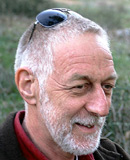
The project hypothesis is that routinely measured ambient PM2.5 concentrations can be decomposed into a linear combination of meaningful concentration fields by factor analysis (FA) and non-negative matrix factorization (NMF) methods. We use supervised machine-learning (ML) models to characterize the extracted factors, using auxiliary co-measured pollutants, meteorological parameters and model-derived airmass trajectories.
Broday’s reseach group studies by how to combine meteorological observations, satellite products and model predictions for estimating ground PM2.5 concentrations. Specifically, we examine how to account for the boundary layer (BL) and the aerosol layer(s) heights, temperature profile observations, the vertical aerosol distribution, and aerosol products that are derived by different satellite-borne instruments that are mounted on different platforms and report distinct spatiotemporal and spectral attributes.
We apply machine learning regression models and develop aerosol-type specific models for estimating different types of PM2.5.
Observed meteorological data are normally missing relevant variables for pollutant dispersion and fate calculation, and are very limited in their spatial coverage. We overcome this limitation by using the comprehensive output of the Consortium for Small-scale Modelling (COSMO) atmospheric model, which is characterized by high spatial and temporal resolutions and a routine observational data assimilation. We also use traffic information and the complete industrial emissions inventory. The pollutants studied are characterized by different sources and physicochemical properties. We associate spatiotemporally varying emissions, meteorology, and air pollutant concentrations by a set of machine learning (ML) tools, trained after the database is partitioned into clusters in an unsupervised manner, with
each partition presumably representing a distinct set of environmental conditions.